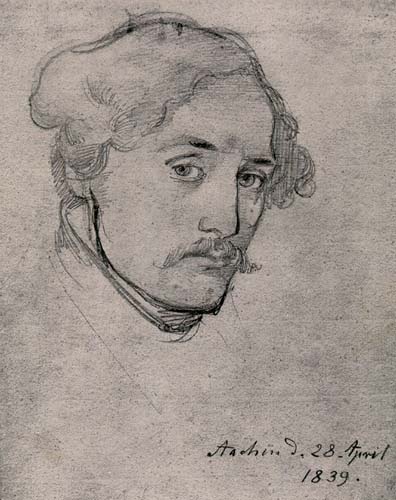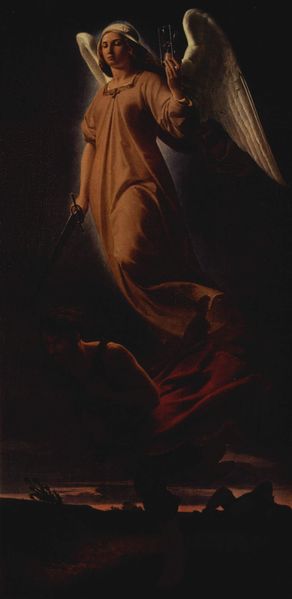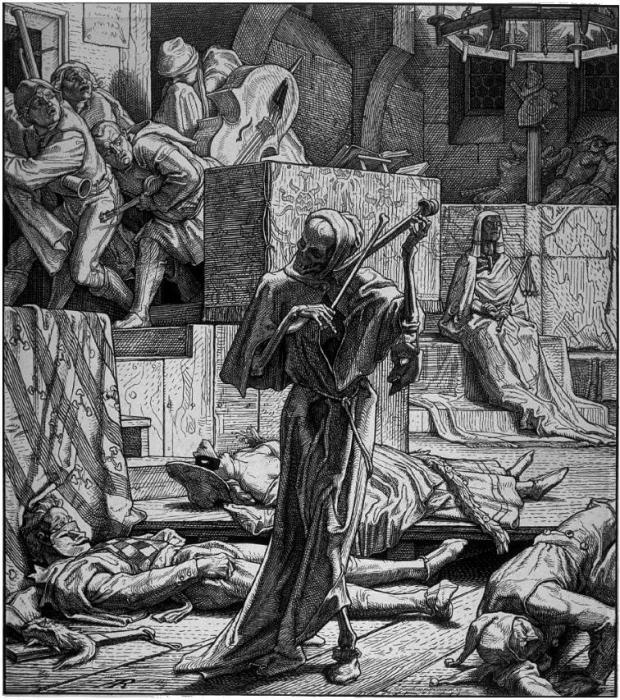Alfred Rethel (1816 – 1859)
Get a Rethel Certificate of Authenticity for your painting (COA) for your Rethel drawing.
For all your Rethel artworks you need a Certificate of Authenticity (COA) in order to sell, to insure or to donate for a tax deduction.
Getting a Rethel Certificate of Authenticity (COA) is easy. Just send us photos and dimensions and tell us what you know about the origin or history of your Rethel painting or drawing.
If you want to sell your Rethel painting or drawing use our selling services. We offer Rethel selling help, selling advice, private treaty sales and full brokerage.
We have been authenticating Rethel and issuing certificates of authenticity since 2002. We are recognized Rethel experts and Rethel certified appraisers. We issue COAs and appraisals for all Rethel artworks.
Our Rethel paintings and drawings authentications are accepted and respected worldwide.
Each COA is backed by in-depth research and analysis authentication reports.
The Rethel certificates of authenticity we issue are based on solid, reliable and fully referenced art investigations, authentication research, analytical work and forensic studies.
We are available to examine your Rethel painting or drawing anywhere in the world.
You will generally receive your certificates of authenticity and authentication report within two weeks. Some complicated cases with difficult to research Rethel paintings or drawings take longer.
Our clients include Rethel collectors, investors, tax authorities, insurance adjusters, appraisers, valuers, auctioneers, Federal agencies and many law firms.
We perform Alfred Rethel art authentication, appraisal, certificates of authenticity (COA), analysis, research, scientific tests, full art authentications. We will help you sell your Alfred Rethel or we will sell it for you.

Alfred Rethel was a German historical painter. Rethel was born at Aix-la-Chapelle (Aachen) in 1816. He showed an interest in art in his early life, and at the age of thirteen he executed a drawing which procured his admission to the academy of Düsseldorf. Here he studied for several years, and produced, among other works, a figure of St Boniface, which attracted much attention.

At the age of twenty, Rethel relocated to Frankfurt, and was selected to decorate the walls of the imperial hall in the Rmer with figures of famous men. At the same period he produced a series of designs illustrative of Old Testament history. Four years later, Rethel was the successful competitor for the work of ornamenting the restored council house of his native city with frescoes depicting prominent events in the career of Charlemagne, but the execution of this work was delayed for some six years. Meanwhile Rethel occupied himself with the production of easel pictures and of drawings. In 1842, he began a striking series of designs dealing with the Crossing of the Alps by Hannibal, in which the weird power which animates his later art becomes first apparent.

In 1844 Rethel visited Rome, executing, along with other subjects, an altar-piece for one of the churches of his native land. In 1846, he returned to Aix, and commenced his Charlemagne frescoes. But mental derangement, attributed, it is believed, to an accident that he suffered in childhood, began to manifest itself. While he hovered between madness and sanity, Rethel produced some of the most striking, individual, and impressive of his works. Strange legends are told of the effect produced by some of his weird subjects. He painted Nemesis pursuing a Murderer a flat stretch of landscape, with a slaughtered body, while in front is the assassin speeding away into the darkness, and above an angel of vengeance. The picture, so the story goes, was won in a lottery at Frankfurt by a personage of high rank, who had been guilty of an undiscovered crime, and the contemplation of his prize drove him mad.

Another design which Rethel executed was “Death the Avenger,” a skeleton appearing at a masked ball, scraping daintily, like a violinist, upon two human bones. The drawing haunted the memory of his artist friends and disturbed their dreams; and, in expiation, he produced his pathetic design of “Death the Friend.” Rethel also executed a powerful series of drawings “The Dance of Death” suggested by the Belgian insurrections of 1848. It is by such designs as these, executed in a technique founded upon that of Albrecht Dürer, and animated by an imagination akin to that of the elder master, that Rethel is most widely known. Rethel died at Düsseldorf in 1859.

Still wondering about a 19th century German painting in your family collection? Contact us…it could be by Alfred Rethel.
Reviews
1,217 global ratings
5 Star
4 Star
3 Star
2 Star
1 Star
Your evaluation is very important to us. Thank you.
